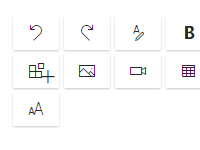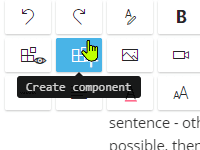
GLUU GUIDES
How to write work instructions
More than nine out of 10 workplace accidents are due to human error. These result in serious injuries and cost the industry billions of dollars every year. Yet much of this could be avoided with better, clearer work instructions. This guide will show you how to write work instructions – or Standard Operating Procedures.
Table of contents
- How to write work instructions
- What’s the difference between work instructions, guides and SOPs?
- Why are work instructions and SOPs important?
- What does a good work instruction look like?
- 7 steps to clear work instructions
- Example of a proven SOP format
- Your work instruction checklist
- Now it’s time to put it into practice!
- Frequently Asked Questions
Knowing how to write work instructions or SOPs, clearly and concisely for your colleagues ensures they know exactly how their various tasks should be performed. It reduces risk because the likelihood of things going wrong is lessened. It also improves efficiency; work instructions ensure the very best way of doing a job is clear and known to the people doing it.
This comprehensive guide will show you how to write work instructions that your colleagues can understand and benefit from. Remember what Einstein said:
“If you can’t explain it simply, you don’t understand it well enough.”
Albert Einstein

Speaking of simplicity: If you’re the type to learn things easier through a visual or audible format, check out our video below about where work instructions started and why they matter:
Speaking of simplicity: If you’re the type to learn things easier through a visual or audible format, watch Gluu’s founder explain where the idea of work instructions comes from and why they matter:
What’s the difference between work instructions, guides and SOPs?
Work instructions are also called work guides, Standard Operating Procedures (SOPs), job aids or user manuals, depending on the situation. In any case, the purpose of the work instructions is to clearly explain how a particular work task is performed. They’re like the step-by-step instructions we receive when we learn to drive a car: check gear stick is in neutral, start ignition, press clutch, change to first gear and so forth.
What’s important is that work instructions should not be confused with processes or process maps. Let’s quickly look at where work instructions fit into our overall process documentation levels:
- A process hierarchy shows your overall process architecture and how it supports your business.
- A process is a chain of activities that transform inputs to outputs. (Interested? read our Guide to simple process mapping)
- A procedure outlines how to perform a process – sequence and who does what. In Gluu we combine process and procedure into a single, simple format (since people confuse them all the time).
- A work instruction – or work guide, job aid or standard operating procedure – describes in detail how an activity within a process (or procedure) is performed.
With this clarity let’s move on to the topic of how to write work instructions. (Oh, one more thing: For clarity on all the BPM lingo see our BPM Glossary)
👉 Recommendation: Ensure that your organization distinguishes between processes, procedures, and work instructions, and invest in creating well-structured work instructions (work guides, SOPs, job aids) to provide detailed guidance for specific tasks within your processes.
Why are work instructions and SOPs important?
They reduce the impact when key people leave
Work instructions, or SOPs, build and preserve the knowledge inside a company. When “how things are done” are passed on verbally, there is room for interpretation and human error. And knowledge about how to most efficiently perform a task is lost when said employee leaves the company and takes the knowledge with them. Good work instructions avoid all this.
Work instructions reduce risk
They reduce risk because the safest way of doing a job is clear and known by the people that matter.
Avoid errors and “the blame game”
Clarity avoids errors. Crucially, this avoids the blame game. When things go wrong the tendency is to blame or hold people responsible, which is natural. But if this happens often it can have an impact on staff morale. Having clear work instructions minimises this problem.
Save time
The chart below shows Gluu’s own research on the Return on Investment when writing work instructions. The point is that your initial investment in time is paid back once your work instruction has been used just three times. This only refers to time-saving – we haven’t even mentioned the value of avoiding errors and rework. This is also referred to as “Standard Work” within Lean:

What does a good work instruction look like?
Work instructions should make crystal clear how employees perform their tasks. There should be no room for interpretation. They should not be vague. You want to minimise the chance of them confusing your workers. This means your instructions should be as brief and simple as possible. The Internet is littered with amusing examples of poorly written instructions, and others that having hilarious double meanings. Here some ground rules to help you along:
#1 it’s clear
As George Orwell said…
“Good writing is like a windowpane”.
You look straight through it and immediately grasp the meaning. Every employee should be able to understand your work instructions. Avoid multi-syllable words, complex sentences, jargon, acronyms, too many technical terms (without explaining them) and unnecessary blather.
Write your work instructions in a way that makes them easy to understand for every employee who does the task. Use the active voice to help your reader, which refers to the subject, verb, noun sentence structure. For example, the man (subject) sipped (verb) his beer (noun), not, his beer the man sipped.
#2 it’s accessible
It’s all very well having work instructions, but what use are they if they are only accessible in the office when the employees that need them are on the factory floor? The people performing the job should have easy access to its works instruction when and where they need it. Travellers or shop papers?
(This is where a tool like Gluu can help you to get the right instruction, in the right format, into the hands of the right employee at the right time.)
#3 it’s credible
Employees must view the work instructions as credible, helpful and accurate. Otherwise, they’re just another nice idea no one cares about. Consult the most experienced employee performing a task and ask him or her to explain how the job is done. Make sure your instructions match reality.
(Again, a tool like Gluu can help you to involve the right people and collaborate on keeping it updated as you learn and develop.)
#4 it’s consistent
Work instructions should follow a single style. Consistency in terms of terminology, layout, media and method makes them easier to follow and digest. Also in terms of consistency, they should adhere to the skill set of the employees.
(Gluu helps you to ensure a consistent format across the entire organisation.)
#5 it’s short and simple
We touched on this above, but it really is an important point. As Albert Einstein said, “If you can’t explain it simply, you don’t understand it well enough.” Take time to understand it thoroughly. This will avoid mistakes later. Writing a work instruction is not about sounding clever. Instead, think about the language in your television user manual. Or better yet, look at the language used in a children’s book. Try to keep it as short and simple as possible.
#6 it’s visual
We live in a visual culture. Many of us are more comfortable with visual media than with reading books and newspapers. To cater to this, try to use images, drawings and videos where possible in your work instructions. Think about who it is who will be consuming your work instructions and try to prepare them accordingly.
(Gluu lets you add and show images and videos directly on the tablets or phones used by front line staff.)
#7 it’s written by the people that know
The person who is the most experienced in how to do the task should be the one to write the work instruction. Do not give the task of writing your work instructions to an individual who is not 100% familiar with the job. You can not expect an operator to know how to write work instructions to their full potential when they are not yet completely intimate with the role. This means that it can never be one person to write your company’s work instructions unless it’s small. We asked a number of industry experts on why involvement is key and you can see their responses in this article here.
(Gluu lets you delegate ownership to the people that know – no matter where they are.)
So, with these ground rules clear how do you actually write it? That’s what the next section is about.
Some examples of features for good work instructions

Integrated work instructions and SOPs
Build step-by-step instructions with text, media and files to explain how and why work is done.

Reusable work instruction components
Turn selected content into components to be reused across processes, saving time and effort.
7 steps to clear work instructions
Have you ever purchased an unassembled piece of furniture, got home and tried to follow the assembly instructions and got totally confused? If yes, you are not alone. It’s happened to many of us. For this reason, good technical writers are highly desired. Technical writing is a big topic and beyond the scope of this article, but here are seven steps to improve your work instructions:
Step 1: Write a clear title
What’s in an introduction? Well, quite a lot actually. It is crucial to get this part right. To do so make sure you do the following:
- Give some context: briefly, explain which process the task is part of.
- Identify the owners: briefly, explain who the process owner is an who the task owner is
- State the output: briefly, explain what the output or purpose of the task is
- The title must refer to the job: A good example might be, “how to disinfect your hands”.
Step 2: Describe the purpose of the task – the why
What’s the purpose of your work instruction? Why are you preparing it? Asking why questions help you to step back and think about what you’re trying to achieve. The answer to the why isn’t simply the output you have already identified. Asking why is about deepening your understanding before jumping into the details. Read more about the value of the questions why here.
So, a clear purpose to “how to disinfect your hands” would be “Avoid spreading bacteria so that other risk falling ill.”
Step 3: Describe how to do the work
First of all, you need to list the materials required to do the job. For easy reading, it’s best to list these in bullet points and to distinguish between the materials that are provided and not provided. Order your bullet point list logically. For example, in the case of disinfecting hands:
- Household soap
- Liquid antimicrobial soap in a dispenser
- Running water
- Towels
Include any relevant or helpful references directly into the text as natural hyperlinks. This makes it easy for your reader to clarify things.
To describe how, for example, employees should disinfect their hands you must first choose a format to explain this. There are three basic options. The cookbook format, the decision table and the flowchart. You might choose different formats for different jobs, perhaps according to their complexity. Remember here that many people are visual learners so tables and flowcharts, perhaps with images, might be the best approach.
Step 4: Format for easy reading
Think of your work instruction document as an educational tool. Put yourself in the reader’s shoes and think about what would help him or her digest the document.
- Choose how you will format the document and stick with it. If you are practising Lean, then here’s an example format to consider using.
- Break down any steps into a number sequence. If there are more than 10 steps, then subdivide the different topics. One step describes one action that takes no more than 15 seconds to complete.
- Use images or drawings. Make sure the image fits the text. Refer to the image in the text. Place images on the left side of the paper and keep the text on the right side.
- Emphasise important information by using upper case, bold or italicised text.
- Turn any list into a bulleted or numbered list.
Tools, such as Gluu’s work instruction function in our Understand product, has built-in formatting that makes it easy to ensure consistency across. E.g. it is useful to format risks in the same way so people quickly learn to spot them:
Step 5: Rewrite and simplify
The key rule for good writing is brevity. Short, simple and clear.
- Use short and simple sentences. Sentences should be no longer than 15 words and should be without clauses.
- Use short and simple words. Multi-syllable words sound brainy but slow the reader down. Make it easy for them and imagine you’re writing for a five-year-old.
- Avoid acronyms, and if you must use one then spell it out the first time and enclose the acronym in brackets next to it. Use the acronym from then on.
- Include a list of abbreviations the reader can refer to.
- Decide which word or term you will use to describe something and stick with that. Don’t use different words for the same thing. For example, if you use the term “household soap” then only use that throughout the whole document.
As discussed above, use active sentences, not passive:
Correct: Dry your hands thoroughly.
Incorrect: Your hands should be dried thoroughly.
Step 6: Add references
It’s always helpful to provide sources and suggestions for further reading and learning. Either add footnotes or have an appendix at the end of the document.
Step 7: Test with a colleague!
To make sure your work instructions are easy to understand and follow, ask a colleague to perform the task by following it. This will tell you if certain parts or explanations are confusing or need further clarification.
- Ask an appropriate colleague to read the draft of your work instruction and to give you feedback on it. Does the work instruction match the way the task is performed in reality? Is it confusing? What could be clearer?
- Request the colleague to perform the job by following the draft work instruction. Do NOT help him/her, or give further explanations. Observe.
- Make notes of what should be added or changed on your copy of the work instruction.
👉 Recommendation: Incorporate these 7 steps into your work instruction writing process to ensure clarity, simplicity, and effectiveness in conveying information to your audience.
Example of a proven SOP format
Lean.org has some useful templates for writing Standard Work Job Instructions. These are mostly for more advanced factory settings:

Source: https://www.lean.org/

Try Gluu for free
Sign up for a 30-day trial.
No credit card required.
Your work instruction checklist
To summarise and simplify, here’s a checklist for you to have on hand when you’re planning how to write your next work instruction.
- Identified process the task is part of
- Identified the purpose of the task
- Understood the task’s scope
- Named people responsible for the task
- Stated tools required for the task
- Mentioned any safety requirements
- Chosen an appropriate and helpful format
- Used helpful visual aids
- Checked for simple language and short sentences
- Removed unnecessary jargon and technical terms
- Tested on a colleague.
Now it’s time to put it into practice!
As we often say, it’s important to remember that
“Perfect is the enemy of the good.”
Just start and learn and improve as you go. One idea is to inform your colleagues what you’re doing and ask them to point out any mistakes or oversights. This will ensure your work instruction is well received. Here at Gluu, we believe in writing work instructions within an integrated system to manage business processes.
…or if you’re feeling ready check out our work instructions feature to get started on your own work instructions right now.
Frequently Asked Questions
Work instructions serve to clearly explain how specific tasks should be performed in a concise and easily understandable manner. They reduce the risk of errors, enhance efficiency, and help preserve essential knowledge within a company.
Work instructions provide detailed guidance on how to perform a specific activity within a process or procedure. Processes represent the overall flow of activities, while procedures outline the sequence of actions and responsibilities. Work instructions focus on the specifics of task execution.
Craft a clear title, explain the task’s purpose, list materials logically, use visuals, simplify language, add references, and test with a colleague.

